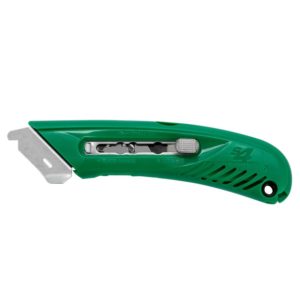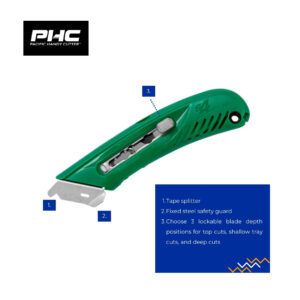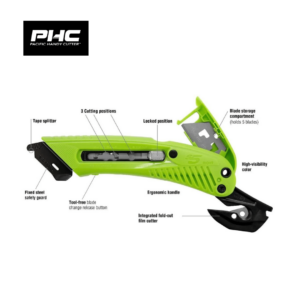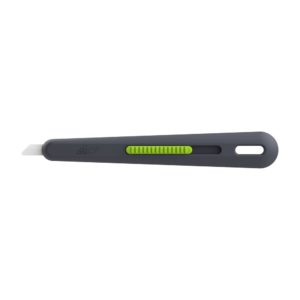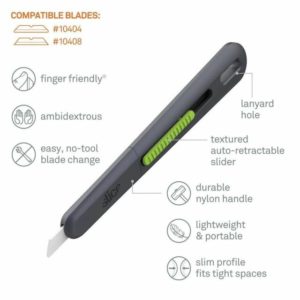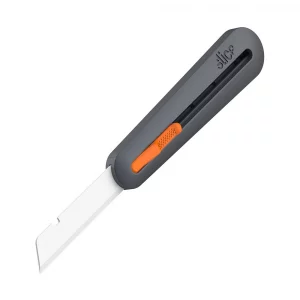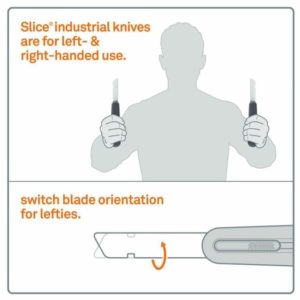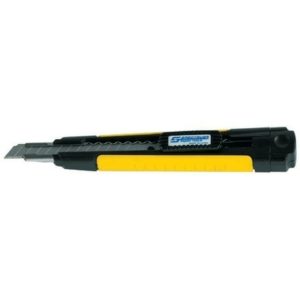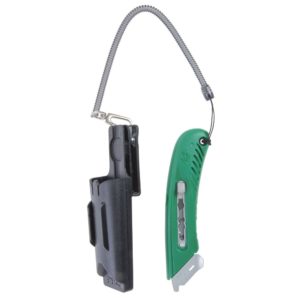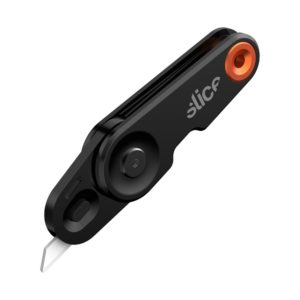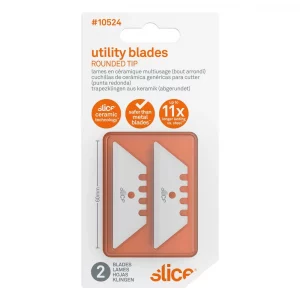Safety cutters are specifically designed tools intended to minimize the risk of injury while performing various cutting tasks in the workplace.
With their unique features, such as recessed blades and ergonomic designs, these tools promise to make everyday tasks safer and more efficient.
But do safety cutters really prevent injuries?
In this article, we’ll delve into the world of safety cutters and injury prevention, providing you with safety cutter facts and insights that will help you make an informed decision about their effectiveness in your workplace.
The Role of Safety Cutters in Injury Prevention
Safety Cutter Design Features
Safety cutters come in various designs with specific features to reduce the risk of injury. Some key design features include:
- Recessed blades: To minimize contact between the blade and the user, safety cutters often have recessed or concealed blades that only expose a small portion when cutting. This helps prevent accidental cuts and punctures.
- Ergonomic handles: These handles are designed to provide a comfortable grip and reduce the strain on the user’s hand, lowering the likelihood of injury from repetitive motions.
- Automatic blade retraction: Some safety cutters have a spring-loaded mechanism that automatically retracts the blade when the cutting pressure is released. This helps prevent accidental cuts if the cutter slips or is dropped.
- Blade guards: Many safety cutters have a built-in guard to protect the user’s fingers from coming into contact with the blade during use.
- Integrated multi-tool: Some safety cutters, such as the PHC S5, integrate multiple tools to prevent the need to carry an additional film cutter. This makes work more efficient and lessens the chance of injury from switching tasks.
Recommended Safety Cutters
- Rated 5.00 out of 5$7.99This product has multiple variants. The options may be chosen on the product page
- Rated 5.00 out of 5$8.99This product has multiple variants. The options may be chosen on the product page
Safety Cutter Applications
Safety cutters are designed for use in a variety of industries and applications, including:
- Warehousing and distribution: Opening boxes, cutting shrink wrap, and breaking down cardboard are common tasks in these environments, and safety cutters can help prevent injuries related to these tasks.
- Manufacturing: Cutting materials, trimming excess material, and opening packages are all tasks that can be made safer using safety cutters.
- Retail: Employees often need to open boxes, cut tags, and remove packaging, making safety cutters an essential tool for reducing injuries in this industry.
- Food Service: Safety cutters can help prevent injuries in food preparation and packaging tasks, such as opening bags, cutting plastic wrap, and slicing through food packaging.
Safety Cutter Facts: The Impact on Workplace Injuries
Reduction in Laceration Injuries
One of the main benefits of using safety cutters is reducing laceration injuries. According to the Occupational Safety and Health Administration (OSHA), lacerations are among the most common workplace injuries, accounting for approximately 30% of all injuries. Studies have shown that implementing safety cutters can significantly decrease laceration injuries, with some reports indicating up to an 80% reduction in injuries in workplaces that have adopted these tools.
Costs Savings from Fewer Injuries
Companies that invest in safety cutters can also experience significant cost savings due to fewer injuries. Workplace injuries can result in lost productivity, increased compensation claims, and potentially costly legal issues. Safety cutters can help companies save money in the long run by reducing the likelihood of injury.
Improved Worker Morale and Productivity
Using safety cutters can also lead to improved morale and productivity among employees. Workers who feel safe and protected are more likely to be motivated and engaged. Additionally, the ergonomic design of many safety cutters can help reduce fatigue and discomfort, leading to increased efficiency and productivity.
Factors Influencing the Success of Safety Cutters in Injury Prevention
Proper Training and Education
While safety cutters are designed to be inherently safer than traditional cutting tools, proper training and education are still essential for their success in reducing injuries. Workers must be trained on correctly using these tools, including the appropriate cutting techniques and the importance of maintaining a sharp blade.
Consistent Use and Enforcement
For safety cutters to be effective, they must be consistently used by all employees. Management should enforce the use of safety cutters and provide regular reminders about their importance in injury prevention. Consistent use of these tools can help develop a workplace safety culture, further reducing the likelihood of injuries.
Choosing the Right Safety Cutter for the Task
Not all safety cutters are suitable for every cutting task. It is essential to select the right safety cutter for the job to ensure maximum protection and efficiency. Factors to consider when choosing a safety cutter include the type of material being cut, the frequency and duration of cutting tasks, and the specific cutting requirements of the job.
Frequently Asked Questions
Are safety cutters suitable for all types of cutting tasks? While safety cutters can be used for many cutting tasks, they may not be suitable for every application. Always choose the right safety cutter and consult the manufacturer’s guidelines for specific use cases.
Can safety cutters eliminate the risk of injury? While safety cutters can significantly reduce the risk of injury, no tool can completely eliminate the risk. Proper training, consistent use, and a commitment to workplace safety are all essential for minimizing the likelihood of injuries.
How often should safety cutter blades be replaced? The blade replacement frequency depends on the specific cutter and the intensity of use. Regularly inspect the blade for signs of dullness or damage and replace it as needed to ensure optimal cutting performance and safety.
Conclusion
Safety cutters have been proven to reduce the risk of injuries in various industries and applications.
Their unique design features and ergonomic benefits make them a valuable tool for promoting workplace safety.
However, the success of safety cutters in injury prevention depends on proper training, consistent use, and selecting the right tool for the job.
By understanding the safety cutter facts and implementing these tools in your workplace, you can create a safer environment for your employees and experience the benefits of reduced injury rates and improved productivity.
Innovative Features in Today’s Safety Cutters
Explore the many benefits of purchasing utility knives in bulk—from significant cost savings and enhanced workflow to environmental sustainability. This guide covers everything from the types of knives, essential buying tips, top brands, and effective usage strategies to safety practices and maintenance advice, helping you make the most informed decision at SafetyCutters.net.
The Ultimate Guide to Buying Bulk Utility Knives
Explore the many benefits of purchasing utility knives in bulk—from significant cost savings and enhanced workflow to environmental sustainability. This guide covers everything from the types of knives, essential buying tips, top brands, and effective usage strategies to safety practices and maintenance advice, helping you make the most informed decision at SafetyCutters.net.
Unleashing the Precision: Exploring the Benefits of Ceramic Scalpels
Introducing Slice Ambidextrous Ceramic Scissors As a professional in any industry, having the right tools can make all the difference. When it comes to cutting

